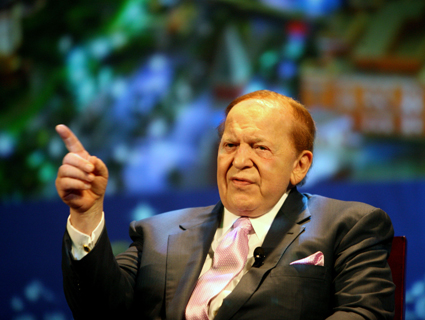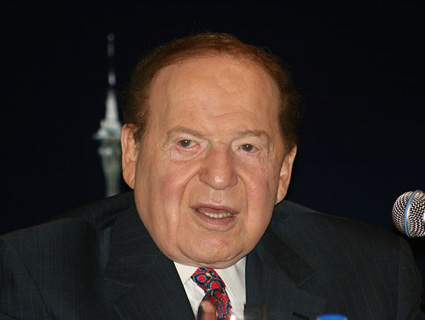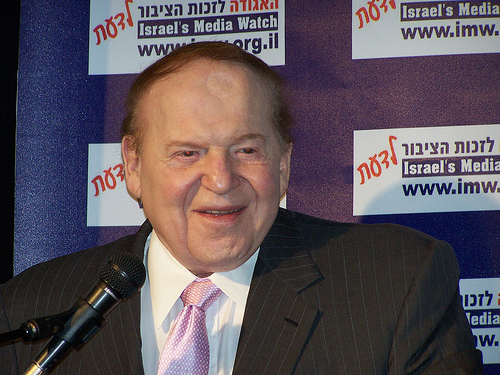
Sheldon Adelson.Photo by Color China Photos/Zuma Press
In the super-PAC era, it is never too early to cozy up to the biggest bankrollers in American politics.
Just a week after Election Day, three potential contenders for the 2016 GOP nomination—Louisiana Gov. Bobby Jindal, Ohio Gov. John Kasich, and Virginia Gov. Bob McDonnell—paid visits to casino magnate Sheldon Adelson, Politico reported Monday. Adelson and his wife, Miriam, set a new record for individual giving at $54 million during the 2012 campaign. And that’s just the spending that was disclosed—it’s likely they gave much more. Adelson said in March he might give as much as $100 million to retake the White House, and the Huffington Post reported Monday that Adelson’s total giving is actually closer to $150 million. So it’s no surprise that Adelson would be at the top of Republican presidential aspirants’ must-visit list.
Democrats are likewise buttering up their biggest donors. Maryland Gov. Martin O’Malley of Maryland will meet with donors in Los Angeles this week, Politico notes, and in posh Chevy Chase, Md., next Monday. Given Southern California’s outsized role in bankrolling President Obama’s reelection campaign,future Democratic candidates’ road to the White House runs through Los Angeles and, in particular, mega-fundraiser Jeffrey Katzenberg, the CEO of Dreamworks. You can expect to see plenty more presidential aspirants swing through L.A.
Vice President Joe Biden, a potential 2016 candidate, and Sen. Mark Warner (D-Va.), a centrist favorite, have also met with donors in recent weeks.
Lawmakers, of course, probably aren’t giddy about spending their time with their party’s moneymen. But with public financing of presidential campaigns horribly outdated, and with super-PACs and shadowy nonprofits so influential, any viable presidential bid needs big money in its camp. That state of play has Democrats already fretting about the next presidential campaign:
“I don’t think that there would be any way to prevent that,” said Paul Begala, a top strategist for the Priorities USA Action super-PAC, which supported President Barack Obama and reported spending $65 million attacking Romney. “The next time around will be an open seat, and you are almost certain to see a proliferation of these things.”
But one of Begala’s top donors, Houston trial lawyer Steve Mostyn, who along with his wife and their law firm donated $4.2 million to liberal super PACs, predicted Democratic donors could avert a nasty and expensive super PAC primary war.
“Democratic donors already have a distaste for super PACs, and I believe that an agreement not to use super PACs in the primary or at least not to be used in an attacking manner is something big donors on the Democrats’ side will push for and get,” Mostyn said. Otherwise, “there is a possibility of the same type of demolition derby on both sides.”
Mostyn says he’s not ready to commit to a 2016 candidate. “I have not thought about it, and at this time I have no desire to,” he said.











